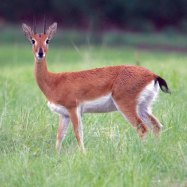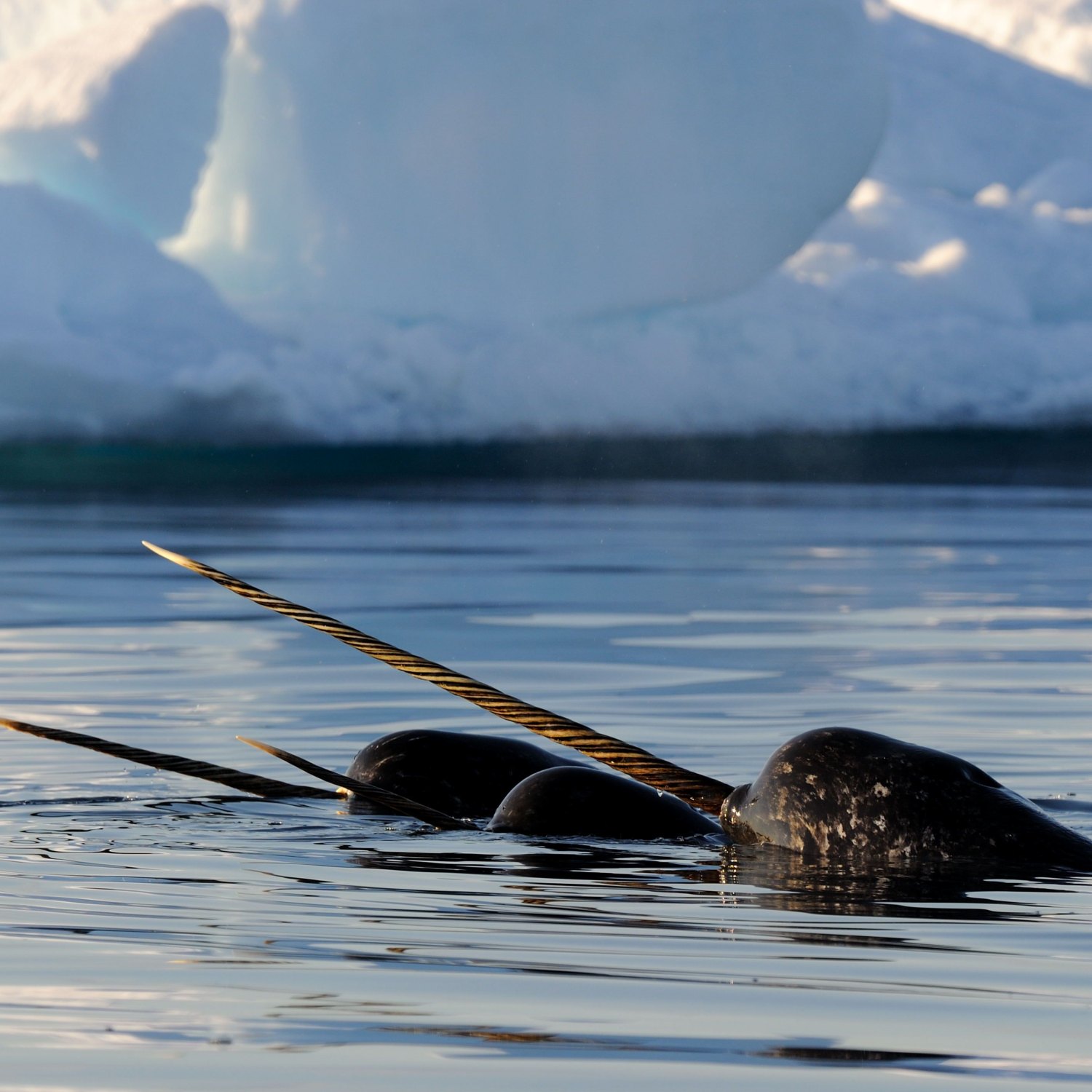
Narwhal
Up to 16 feet (4.9 meters)
The Narwhal, also known as the unicorn of the sea, can reach up to 16 feet in length and is found in Arctic and sub-Arctic waters. This unique creature is a member of the Monodontidae family and has a streamlined body shape, allowing it to swim through the icy waters with ease. Spot these majestic animals in their natural habitat today! #Narwhal #Arctic #Monodontidae
Animal Details Summary:
Common Name: Narwhal
Kingdom: Animalia
Habitat: Arctic waters
The Majestic Narwhal: The Unicorn of the Arctic Waters
If you've ever heard of a mythical creature called the unicorn, then you may already have an idea of what the Narwhal is. But let us tell you, this animal is no myth. The Narwhal, scientifically known as Monodon monoceros, is a rare and fascinating marine mammal that inhabits the Arctic and sub-Arctic waters.From its physical appearance to its lifestyle and behavior, the Narwhal is truly a unique creature that has captivated the curiosity of many Narwhal. Join us as we dive deeper into the world of the Narwhal and discover what makes this animal truly extraordinary.
An Arctic Gem: Habitat and Distribution
The Narwhal is a member of the Cetacea order, which also includes whales and dolphins. It belongs to the Monodontidae family, along with its cousin the beluga whale. The Narwhal is widely distributed in the Arctic region, primarily in Canada, Greenland, Norway, and Russia. Its preferred habitat is icy, open waters, and it can also be found in areas with thick pack ice.One of the most fascinating facts about the Narwhal is its ability to navigate underwater using echolocation. It produces clicks and high-pitched squeals that bounce off obstacles, allowing it to locate food and avoid predators in the dark, murky waters of the Arctic.
Carnivorous Creatures: Feeding Method and Diet
Narwhals are carnivorous animals, which means they eat meat. They feed on various ocean creatures, including fish, squid, shrimp, and other smaller marine animals North American Black Bear. Their diet may vary depending on their location and availability of prey. As a result, they have a diverse feeding strategy and can dive up to 1,500 meters in search of food.Their diet is not the only thing that makes them unique. The Narwhal has specialized teeth, which have evolved into a long, spiraled tusk in males. This tusk can reach up to 10 feet in length and is one of the most distinctive physical features of this animal. But what is the purpose of this tusk? Let's find out.
The Mystical Tusk: Unicorn of the Sea?
The Narwhal's tusk has always been a subject of fascination and speculation. It is believed to have multiple purposes, including social signaling, feeding, and even aggression. However, the most popular theory is that the tusk serves as a sensory organ.The tusk is permeated with small nerve endings that can detect temperature, pressure changes, and even chemical composition in the water. This makes the Narwhal an incredibly adaptable predator and allows it to thrive in the icy Arctic waters.
Underwater Acrobats: Physical Appearance and Behavior
The Narwhal, on average, can grow up to 16 feet in length (4.9 meters), with males being slightly larger than females. They can weigh up to 3,500 pounds, making them one of the larger species of toothed whales.Their streamlined body shape, along with their long flippers, makes them agile and graceful swimmers. They are also known for their acrobatic abilities, such as breaching and spy-hopping (rising straight up out of the water to get a better view of their surroundings).
The Colors of the Arctic: Animal Coloration and Adaptations
Narwhals have a mottled grayish-blue coloration, which helps them blend in with their icy surroundings. They have white patches on their body, which may also serve as a form of camouflage. Their skin is thick and blubbery, providing insulation in the frigid Arctic waters. This thick layer of blubber can also increase their buoyancy, allowing them to stay submerged for extended periods without using too much energy.Another incredible adaptation of the Narwhal is their ability to change their body color to regulate body temperature. When in warmer waters, their skin turns darker to absorb more heat, and when in colder waters, they turn lighter to reflect the sun's rays and prevent heat loss.
A Threatened Species: Conservation Status and Efforts
Despite being such a fascinating and unique animal, the Narwhal's population is at risk. They are listed as "near-threatened" on the IUCN Red List, with climate change being their biggest threat. As the Arctic sea ice melts, Narwhals face losing their primary habitat, food source, and breeding grounds.Additionally, Narwhals are also hunted for their tusks, which are highly valued in some cultures and used for decorative purposes. While the hunting of Narwhals is now strictly regulated, illegal poaching and accidental entanglement in fishing gear are still a significant concern.
Embracing the Narwhal's Magic: A Symbol of Resilience and Adaptability
The Narwhal may not be the first animal that comes to mind when you think of the Arctic, but its uniqueness and adaptations make it a crucial species in the fragile ecosystem of the region. Despite facing numerous threats, the Narwhal has survived and adapted to its harsh environment for thousands of years.These remarkable creatures serve as a reminder of the importance of preserving our planet's diverse and delicate ecosystems. By understanding and appreciating the Narwhal's beauty and magic, we can strive towards a more sustainable future and protect these incredible animals for generations to come.
The Narwhal: A True Wonder of Nature
In conclusion, the Narwhal is a remarkable animal that continues to spark our imagination and ignite our curiosity. From its unicorn-like tusk to its ability to change body color and navigate in the dark, icy waters, there is so much to learn and appreciate about this creature.Despite facing numerous challenges, the Narwhal continues to thrive and captivate us with its beauty and resilience. And as we continue to discover more about this magnificent animal, one thing is for sure – the Narwhal is truly a wonder of nature.

Narwhal
Animal Details Narwhal - Scientific Name: Monodon monoceros
- Category: Animals N
- Scientific Name: Monodon monoceros
- Common Name: Narwhal
- Kingdom: Animalia
- Phylum: Chordata
- Class: Mammalia
- Order: Cetacea
- Family: Monodontidae
- Habitat: Arctic waters
- Feeding Method: Carnivorous
- Geographical Distribution: Arctic region
- Country of Origin: Canada, Greenland, Norway, Russia
- Location: Arctic and sub-Arctic waters
- Animal Coloration: Mottled grayish-blue, with white patches
- Body Shape: Streamlined
- Length: Up to 16 feet (4.9 meters)
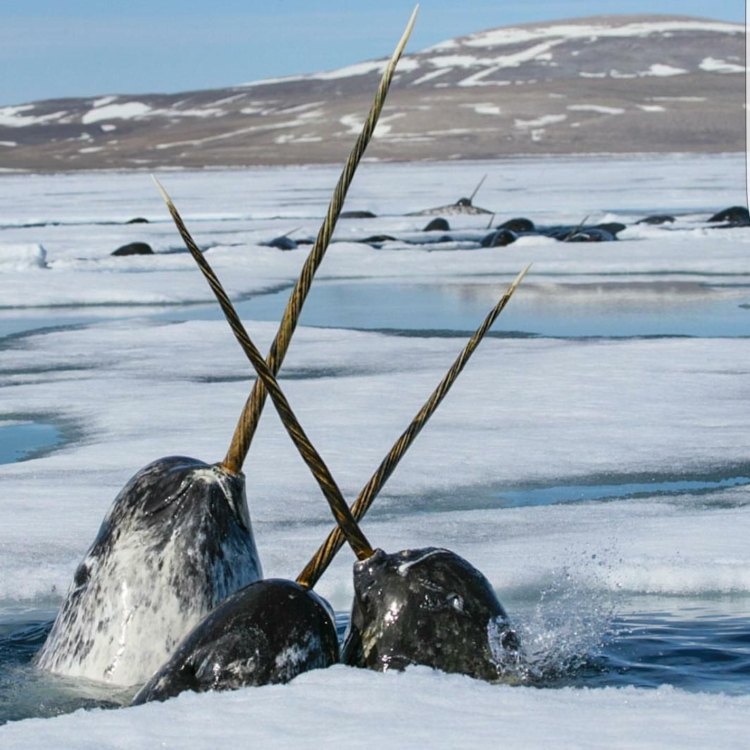
Narwhal
- Adult Size: Up to 3,530 pounds (1,600 kilograms)
- Average Lifespan: Up to 50 years
- Reproduction: Sexual
- Reproductive Behavior: Mating occurs in the spring
- Sound or Call: Vocalizations include clicks, whistles, and trills
- Migration Pattern: Seasonal migration
- Social Groups: Pods of 15-20 individuals
- Behavior: Social and highly vocal
- Threats: Climate change, hunting
- Conservation Status: Near Threatened
- Impact on Ecosystem: Important for maintaining the balance of Arctic marine ecosystems
- Human Use: Traditionally hunted by indigenous peoples for meat, blubber, and tusk
- Distinctive Features: Long, spiral tusk (tooth) protruding from the upper jaw
- Interesting Facts: The tusk of the narwhal is actually a modified canine tooth that can grow up to 10 feet long
- Predator: Killer whales
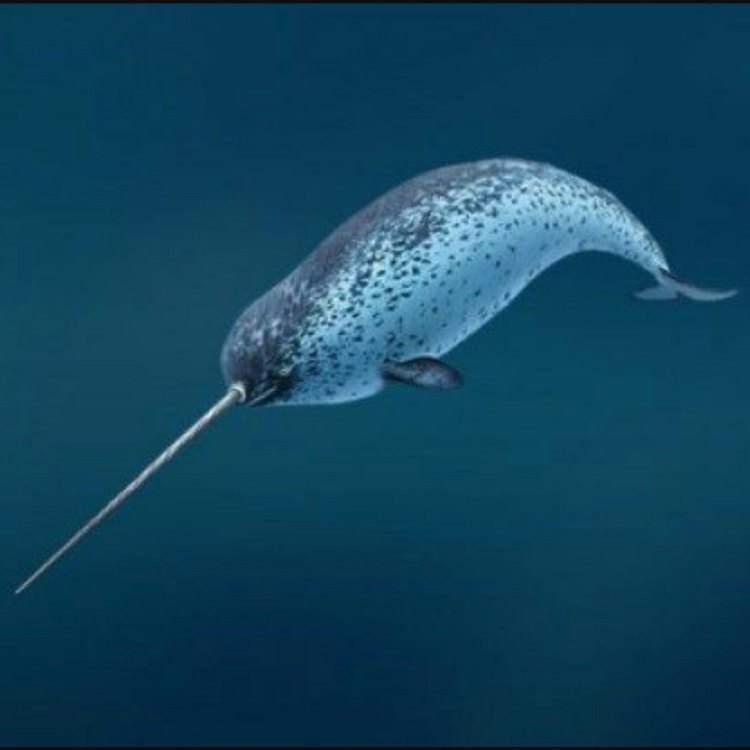
Monodon monoceros
The Enigmatic Narwhal: Unraveling the Mysteries of the Arctic's Unicorn of the Sea
In the vast and icy waters of the Arctic, there is a creature that has captured the imagination of humans for centuries. With its long, spiraling tusk and elusive nature, the narwhal has been both revered and feared by those who have encountered it. Often referred to as the "unicorn of the sea," this majestic marine mammal holds many unique features and behaviors that have baffled scientists and intrigued the general public. In this article, we will delve into the world of the narwhal, exploring its distinctive characteristics, behavior, threats, and impact on the fragile Arctic ecosystem PeaceOfAnimals.Com.The narwhal (Monodon monoceros) is a member of the Monodontidae family, which also includes beluga whales. It is a medium-sized toothed whale, measuring up to 18 feet (5.5 meters) in length and weighing up to 3,530 pounds (1,600 kilograms). However, their average size is around 13-16 feet (4-5 meters) and 2,200-3,300 pounds (1,000-1,500 kilograms). They have a stocky body, a small head, and a curved dorsal fin. One of their most distinctive features is their long, spiral tusk, which can grow up to 10 feet (3 meters) in length.
Unlike other marine mammals, the narwhal has a unique mating behavior. They reproduce sexually, and mating occurs in the spring when the water temperature is still low, and the sea ice is stable. During this time, the males engage in fierce competition, using their tusks to fight for the chance to mate with females Nutria.
The tusk of the narwhal has been a subject of fascination and speculation for centuries. Initially, it was believed that it was used for digging through the ice or breaking giant holes to breathe. However, recent studies have revealed that its primary function is for sexual selection and behavioral displays. Additionally, the tusk is not limited to males only; some females also have them, although they are much smaller.
Narwhals are highly social and vocal animals, living in pods of 15-20 individuals. They communicate with each other through a variety of sounds, including clicks, whistles, and trills. These vocalizations are essential for social cohesion, finding food, and navigation.
One of the most intriguing aspects of the narwhal is its seasonal migration. Usually, they spend the winter months in the offshore ice-free waters, diving deep and feeding on fish, squid, and shrimp. In the spring, as the sea ice begins to melt, they move back towards the coast, where they mate and give birth to their calves. The exact migration patterns of the narwhal are still not fully understood, adding to their enigmatic nature.
Despite their mysterious nature, narwhals face significant threats in their environment. Climate change is one of the most pressing concerns, as it affects the sea ice conditions and the water temperature, directly impacting their habitat and food sources. As the Arctic warms, the sea ice is melting at an alarming rate, leaving narwhals with less stable ice to give birth and nurse their calves. It also affects the distribution of their prey, making it harder for them to find food.
Another threat to narwhals comes from hunting, particularly by indigenous communities. Traditionally, narwhals have been hunted for their meat, blubber, and tusk. While this practice is sustainable and has been a part of the local culture for centuries, commercial hunting has become a concern. With the increasing demand for narwhal tusk in the international market, there is a danger of over-harvesting, which could have detrimental effects on the population of narwhals.
Due to these threats, the narwhal is classified as Near Threatened on the IUCN Red List. While there are currently no accurate estimates of the population size, it is believed that there are around 80,000 narwhals in the world. And with the rapid changes happening in the Arctic, their future is uncertain.
Apart from the direct threats they face, narwhals also have an essential role in maintaining the balance of the Arctic marine ecosystem. As top predators, they help regulate the population of their prey species, preventing any one species from dominating and disrupting the delicate ecosystem. They also have an impact on the carbon cycle, as their movements and foraging behavior contribute to the redistribution of nutrients in the water.
The relationship between narwhals and humans is complex and spans centuries, with both positive and negative aspects. While they have been traditionally hunted by indigenous peoples, they have also been revered as a source of cultural and spiritual significance. With the increasing importance of conservation and sustainability, there have been efforts to protect narwhals and their habitat, including regulations on hunting and monitoring their populations.
In conclusion, the narwhal is an enigmatic and fascinating creature that continues to intrigue and inspire us. Despite its elusive nature, scientists have made significant progress in understanding its distinct features, behavior, and role in the Arctic ecosystem. However, there is still much to uncover about these mysterious animals, and with the changing climate and increasing human activity, it is crucial to continue studying and protecting them for generations to come. The narwhal truly is a treasure of the Arctic, and we must do everything in our power to ensure its survival in the ever-changing world.
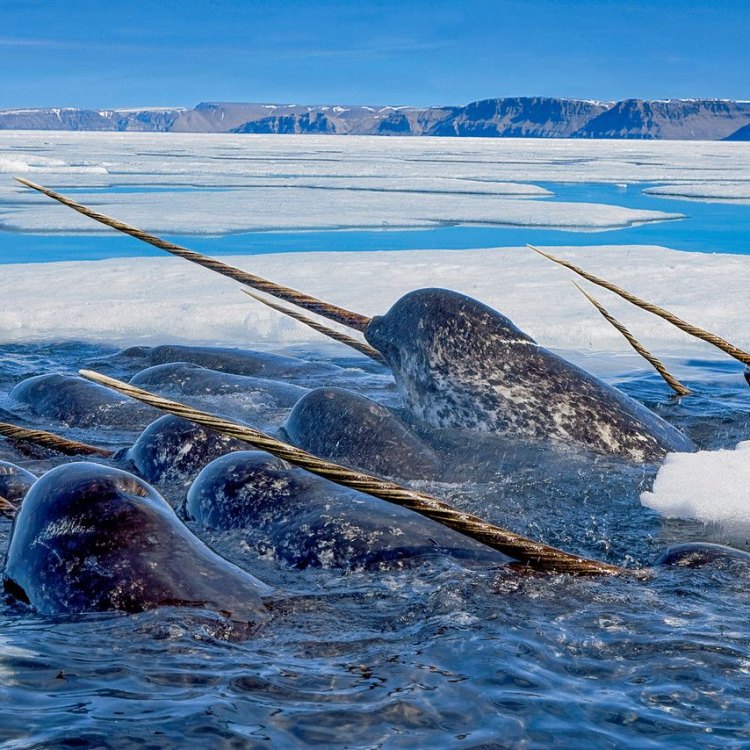
The Majestic Narwhal: The Unicorn of the Arctic Waters
Disclaimer: The content provided is for informational purposes only. We cannot guarantee the accuracy of the information on this page 100%. All information provided here may change without prior notice.


